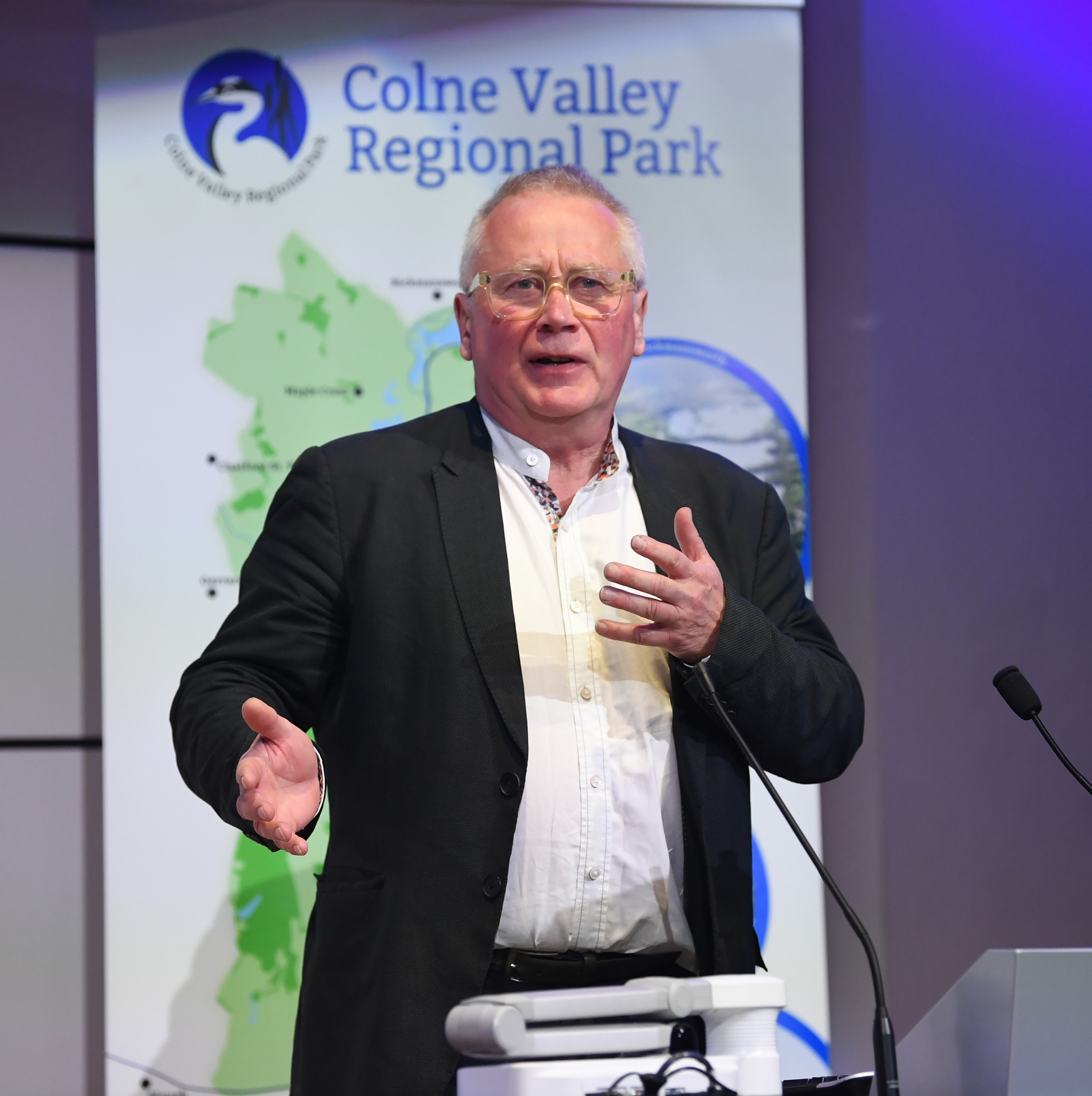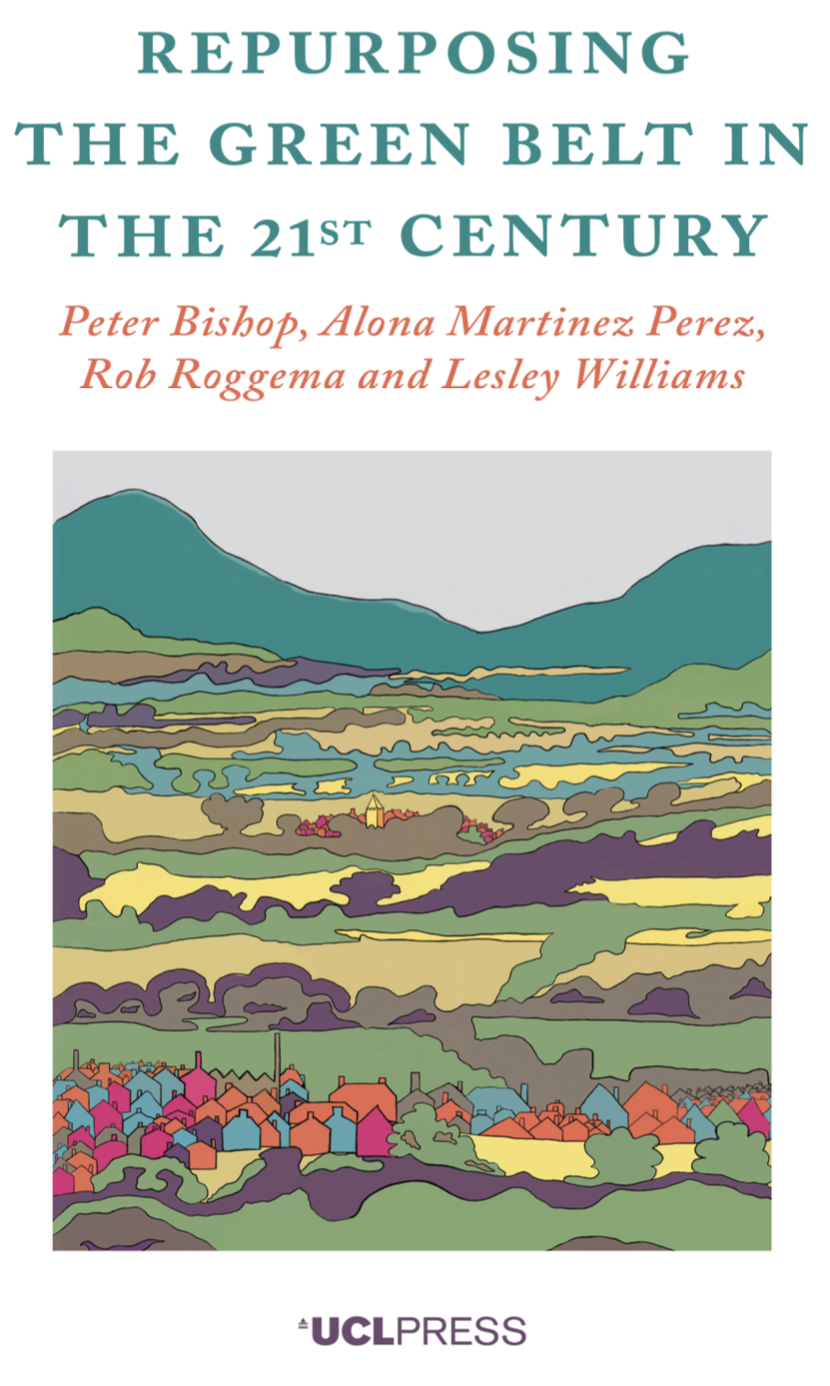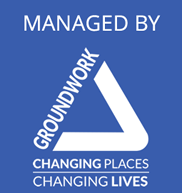Outside of its villages the Colne Valley Regional Park comprises a large section of London’s Green Belt, offering the first taste of countryside to the west of the capital.
Government policy states that the fundamental aim of Green Belt policy is to prevent urban sprawl and the Green Belt’s essential characteristic is its openness and permanence. However, the last five years have seen unprecedented development pressures and notable erosion of our Green Belt. This worrying trend points to the authorities involved needing a vision to ensure the CVRP’s Green Belt sees strategic improvements alongside any major development. This is part of the current debate about the future of our Green Belt.
In 2020 Professor Peter Bishop co-authored a book ‘Repurposing the Green Belt in the 21st Century’. This called for reconsideration of the critical relationship between the city and its hinterlands for the 21st century and put forward a framework to better meet current challenges.
In April 2023 Peter spoke at the Colne Valley Regional Park’s conference ‘Improving how the Green Belt functions on London’s Fringe’.
In this article Peter answers some questions that arose from the conference.
You recently co-authored a book about the Green Belt. What was your reason for doing this?
What main conclusions did you reach in the book?
That the Green Belt had originally been established as a mechanism to limit urban sprawl and as a recreational resource for city dwellers. In the early 20th century local authorities purchased land into public ownership and thus guaranteed access. The introduction of the Town and Country Planning Acts meant that land could be zoned and while this protected the countryside it turned it into a preserve for those living in it. In effect it changed the policy from being proactive to restrictive.
The planning system conveys value through consents, but this accrues as windfall to the landowner. Relaxation of policy might have a marginal impact on housing prices by increasing supply but the development uplift in value does not accrue to the public benefit. Increases in public access and environmental diversity do not occur and the Green Belt is slowly eroded (along with the opportunity to plan its future intelligently).
Other countries such as Germany and the Netherlands have far more integrated land use and environmental planning systems that also capture value uplift.
There will be calls on Green Belt for essential infrastructure, but the same criteria should apply – that any release is part of a planned approach that more than substitutes for loss through extensions to the Green Belt elsewhere and investment in the upgrade of existing Green Belt through purchase for public access or safeguarding/upgrading for biodiversity. The case for infrastructure is regional and the solutions should be too.
Do you think the current planning system in the UK is geared up for properly planning the future of London’s Green Belt?
No. The current planning system is broken and no longer fit for purpose. There is no regional planning framework and decisions on Green Belt development are made on a piecemeal basis through a poorly resourced local plan mechanism. Add the pressure of housing targets and it is clear that we are not making decisions on a rational (or sustainable) basis.
If changes are needed to the current planning system, what headline suggestions would you offer?
First, introduce a regional planning system that decides where growth can optimally be accommodated. Second, introduce primary legislation to tax value uplift on the grant of planning permission, or alternatively set up an agency with powers to compulsorily acquire land at existing use value (+ a small return to the landowner). Third, plan the Green Belt as a dynamic entity, one that expands in size and diversifies in terms of public access and biodiversity.
The Colne Valley Regional Park (CVRP) occupies the ‘inner’ Green Belt on the western edge of London. What future role do you see for an area of Green Belt like this – for society and our environment? And what steps do you think the nine Local Authorities covering this area should take to properly plan this part of the Green Belt so the area functions well in the future?
In recent years some large ad hoc developments, justified by ‘very special circumstances’, have been allowed in the CVRP’s Green Belt, not via a Local Plan review. Do you see any drawbacks with this provision?
Ad hoc decision making is not, by its very nature, likely to produce the best results. A regional planning system would make decisions between areas and allocate housing to those areas best able to accommodate it and at densities that favour public transport. It would also allow for requirements on energy, food production, biodiversity, water management and recreation to be factored in on a long-term basis. The book cites the experience of the Netherlands in this respect.
If our politicians can’t or won’t get to grips with proper planning for the Green Belt, what impact do you think this could have?
Notes and References
Peter Bishop is Professor of Urban Design at the Bartlett School of Architecture, University College London. He was a Director of Planning in various central London Boroughs and from 2006-2011 the Mayor’s Director of Design for London. He is a consultant and has worked on major projects in Sydney, Santiago, Bucharest, and Seoul.
The book that Peter Bishop co-authored ‘Repurposing the Green Belt’ is available from UCL Press.





